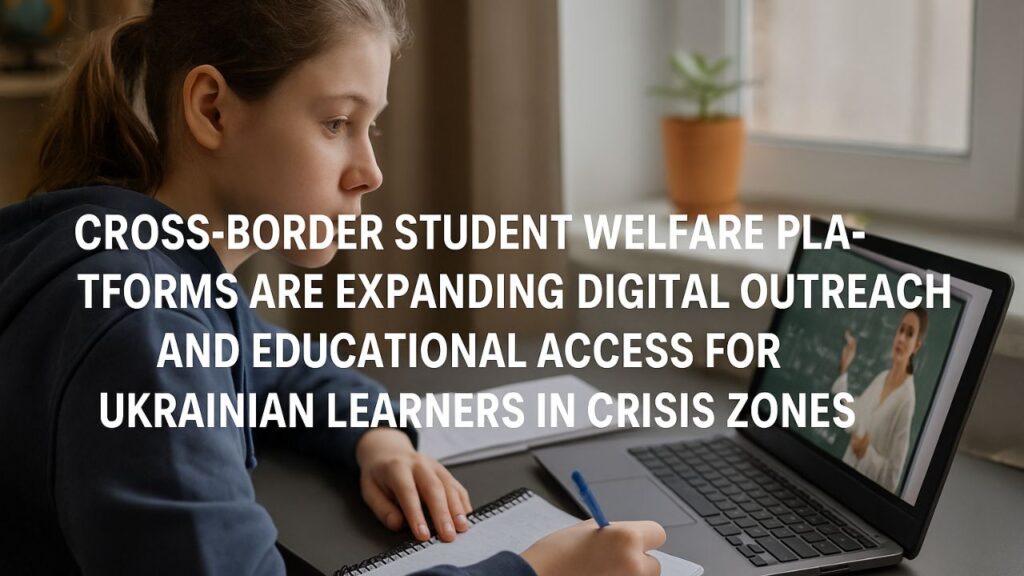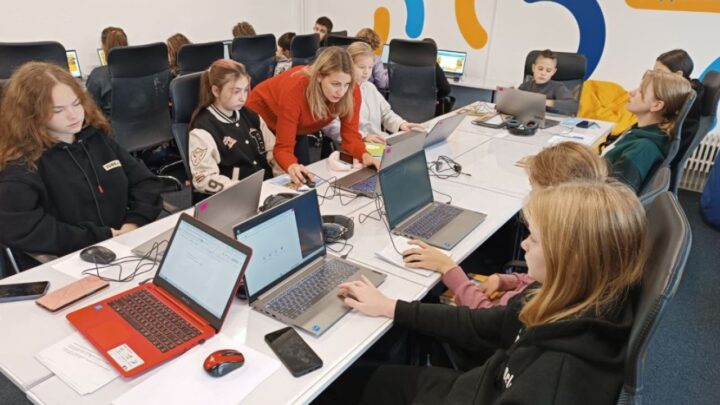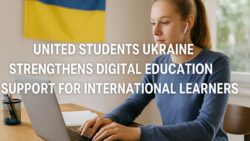Cross-Border Student Welfare Platforms – In the wake of ongoing geopolitical crises and displacement, the educational futures of thousands of Ukrainian learners have been left uncertain. With schools destroyed and families uprooted, traditional learning has become inaccessible for many. To address this critical issue, a range of cross-border student welfare platforms have emerged, offering digital outreach and remote education access specifically designed for Ukrainian students in conflict-affected zones. These platforms are now acting as vital lifelines, bridging borders, restoring hope, and transforming adversity into opportunity.

What Are Cross-Border Student Welfare Platforms?
Cross-border student welfare platforms are digital ecosystems created to support displaced or underserved students by connecting them with educational resources, mentorship, funding, and psychosocial care across national boundaries.
Key Features of These Platforms:
- Multilingual digital portals with content tailored for Ukrainian and other affected learners.
- Live virtual classrooms and self-paced modules accessible from anywhere.
- Partnerships with NGOs, universities, and ministries to ensure academic accreditation.
- Integrated mental health support, community forums, and peer interaction features.
Major Initiatives Supporting Ukrainian Students
In response to the war in Ukraine, several international agencies and tech-based nonprofits have launched cross-border education programs targeted specifically at displaced youth.
Notable Programs and Collaborators:
| Platform Name | Lead Agency | Key Offering | Reach (as of 2025) |
|---|---|---|---|
| EduBridge Ukraine | UNESCO + Local NGOs | K-12 Ukrainian syllabus, live tutors | 120,000+ learners |
| Digital Classrooms Europe | EU Education Board | Digital school registration support | 80,000 students in Poland |
| LearnWithCare | UNICEF + Red Cross | Mental health + study kits | 60,000 children |
| UAStudy Connect | Ukrainian Diaspora Network | Higher education scholarships | 30,000 university students |
| Google for Ukraine | Google.org | Chromebook access + coding bootcamps | 45,000 teens enrolled |

Digital Tools Empowering Crisis-Side Learning
Technology plays a critical role in making education borderless. With smart device accessibility and cloud-based education platforms, students are regaining access to structured learning, even amidst disruption.
Top Digital Tools Being Used
- Khan Academy: Providing free STEM content in Ukrainian.
- Coursera & edX: Offering university-level courses to displaced learners.
- Google Classroom: Used by aid groups for setting up virtual schools.
- Zoom & Microsoft Teams: Powering live classroom delivery.
- Telegram Bots: Delivering language learning tips and quizzes.
Challenges Faced by Ukrainian Learners Abroad
While progress is evident, many hurdles still limit educational accessibility for displaced Ukrainian students. These include:
Key Barriers to Access
- Device Shortage: Many refugee families cannot afford laptops or tablets.
- Internet Inequality: Rural or makeshift shelters lack strong connectivity.
- Language Gaps: Navigating Polish, Romanian, or German curriculums.
- Credential Recognition: Ukrainian school records not accepted abroad.
- Mental Trauma: Ongoing war-related stress affects concentration.
Solutions Offered Through International Collaborations
To overcome these barriers, cross-border platforms are adopting an ecosystem approach with the help of various international stakeholders.

Collaborative Solutions in Action
- Device Drives by Tech Giants: Distribution of refurbished laptops.
- Subsidized Wi-Fi Hotspots: Provided by telecom firms in refugee camps.
- Bilingual Teacher Recruitment: Hiring Ukrainian teachers in diaspora hubs.
- Academic Counseling Hubs: Helping students align with host country curriculum.
- Open Credentialing: Blockchain-based academic certificate verification.
Real Impact: How Many Have Benefitted So Far?
Key Impact Metrics (As of July 2025)
| Impact Area | Number of Beneficiaries |
|---|---|
| Refugee students receiving devices | 98,000+ |
| Learners enrolled in virtual school | 210,000+ |
| Students receiving mental health aid | 65,000+ |
| Number of certified online teachers | 8,500+ |
| Youth placed in college programs | 42,000+ |
| Nations supporting cross-border learning | 27 |
What Lies Ahead: Future of Cross-Border Digital Education
With ongoing conflicts and growing climate-induced displacements worldwide, the success of these platforms is setting a precedent for future humanitarian education models.
Future Trends to Watch
- AI-based adaptive learning for personalized education in crisis.
- Digital school ID systems linked with refugee databases.
- Global open syllabus frameworks to unify education standards.
- Increased private sector CSR participation.
- Mobile-first education kits for offline learning in remote zones.
Cross-border student welfare platforms are not just stop-gap solutions—they are the new architecture for humanitarian education. For displaced Ukrainian students, they represent more than access—they represent belonging, dignity, and a path forward. With sustained support, these platforms can unlock the future for millions, transforming digital education from a privilege into a universal right.
FAQs
1. What is the purpose of cross-border student welfare platforms?
These platforms aim to deliver digital education, mental health support, and academic counseling to students displaced by crises like the war in Ukraine.
2. Are these platforms free to use?
Yes, most platforms are completely free and are supported by NGOs, government agencies, or tech foundations.
3. Can students earn valid certificates through these platforms?
Yes, many platforms offer accredited courses and recognized credentials in partnership with universities.
4. What languages are these platforms available in?
Primarily Ukrainian and English, with options for Polish, German, and Romanian in many areas.
5. How can families or schools access these services?
They can register online through the official websites or connect via local NGO offices and community centers.




